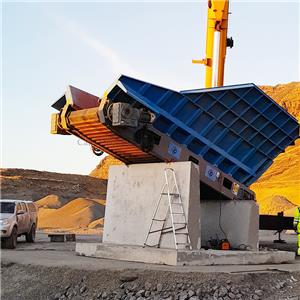- Home
- >
- News
- >
- Industry news
- >
- Design of Powder Pneumatic Conveying System
Design of Powder Pneumatic Conveying System
A powder pneumatic conveying system is an efficient, environmentally friendly and reliable way of conveying materials. It is a widely used solution in many industries, including cement, chemical, pharmaceutical and food.

The following factors are essential to consider when designing a pneumatic powder conveying system:
Material Characteristic Analysis
1. Particle size distribution: This has a direct impact on conveying resistance and flowability. For instance, fine-grained powders may be more susceptible to agglomeration and clogging.
2. Density is a key factor to consider. The power requirements for conveying different types of powder vary depending on their density.
3. Humidity: The conveying results of powders with high humidity may be adversely affected by binding.
Conveying Distance and Height
The conveying distance and height are key factors that influence the pressure and energy required by the system. It is necessary to apply higher pressures to overcome resistance when conveying over longer distances or at greater heights. In a conveying system spanning multiple floors, it is essential to accurately calculate the pressure loss to guarantee that the material reaches its destination.
Conveying Volume Requirements
The conveying capacity of the system is determined according to the requirements of the production process. This will influence the choice of parameters such as pipe diameter, air compressor or Roots blower power. For example, a large-scale production line may require the conveyance of 10-250 tonnes of powder per hour.
Pipe Design
1. The pipe material should be wear-resistant and corrosion-resistant. Common materials include stainless steel and plastic.
2. The diameter of the pipe should be selected on the basis of the volume of material to be conveyed and the characteristics of the material in question. This will ensure the smooth flow of materials and prevent excessive pressure loss.
3. It is important to minimise the number and angle of elbows in a pipework system to reduce resistance and ensure a smooth flow of materials. Additionally, it is essential to seal all connections effectively to prevent leakage.
Air Source System
The air source is typically provided by a fan. The type (low pressure screw air compressor, Roots blower, etc.) and power of the fan should be selected according to the conveying requirements. It is also essential to ensure that air filters, dryers and other equipment are in place to guarantee the quality of the air source.
Control System
The system should be equipped with automatic control functions, including the ability to start, stop, regulate speed, and generate fault alarms. As an example, the system status is monitored in real time using pressure and flow sensors, and adjustments are made in response to the feedback signals.
Safety Design
It is essential to consider safety measures such as explosion-proof and anti-static, particularly when handling flammable and explosive powders. It is essential to install safety valves and explosion relief devices to guarantee the safety of the system's operation.
CAFU offers complimentary design services for pneumatic conveying system to our clientele. If you are seeking suppliers of pneumatic conveying systems for powder, please contact our customer service representatives to obtain the "Pneumatic Conveying System Design Information Collection Form" and provide the necessary information to our customer service personnel. We will promptly provide you with pneumatic conveying system solutions.






